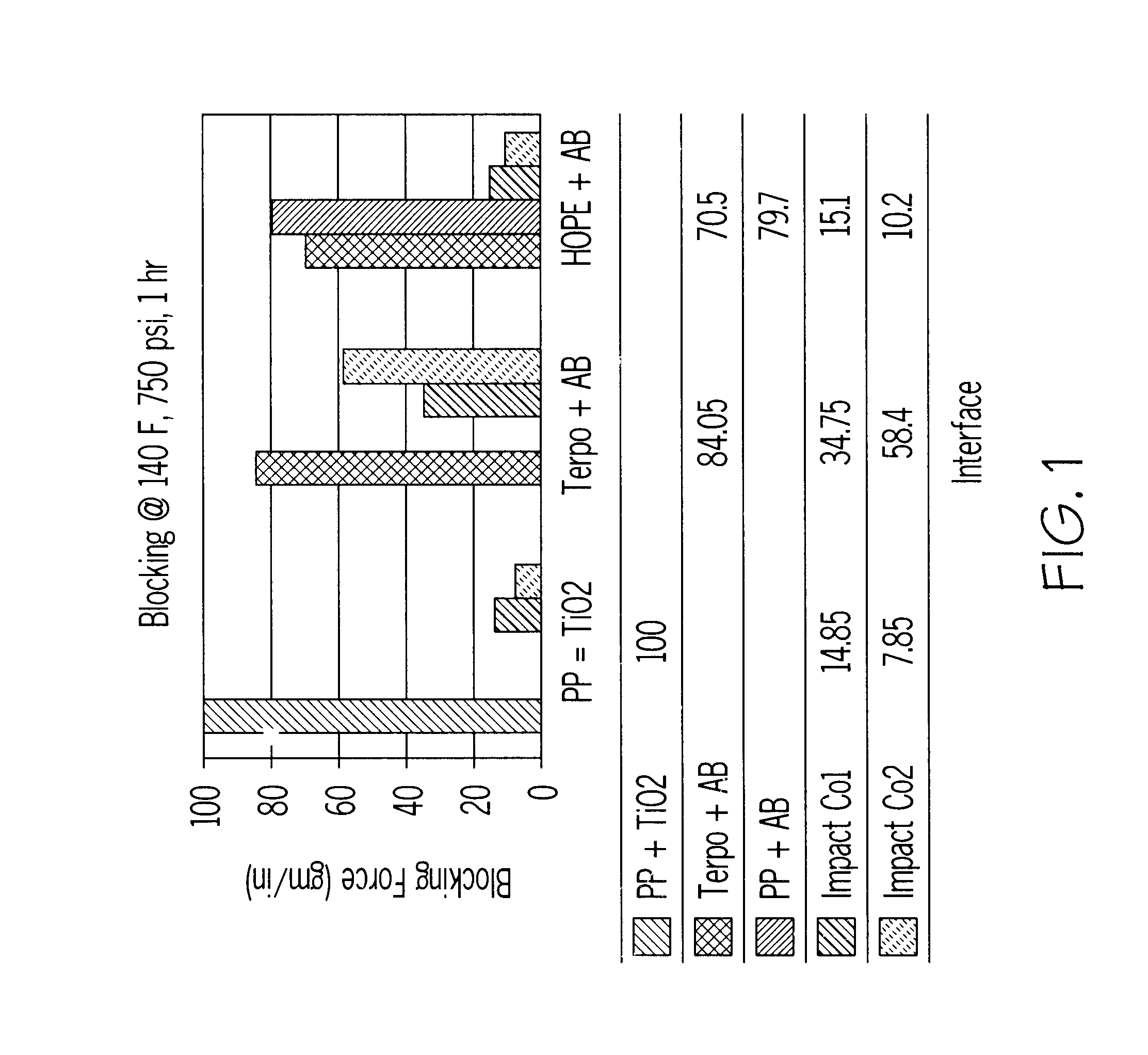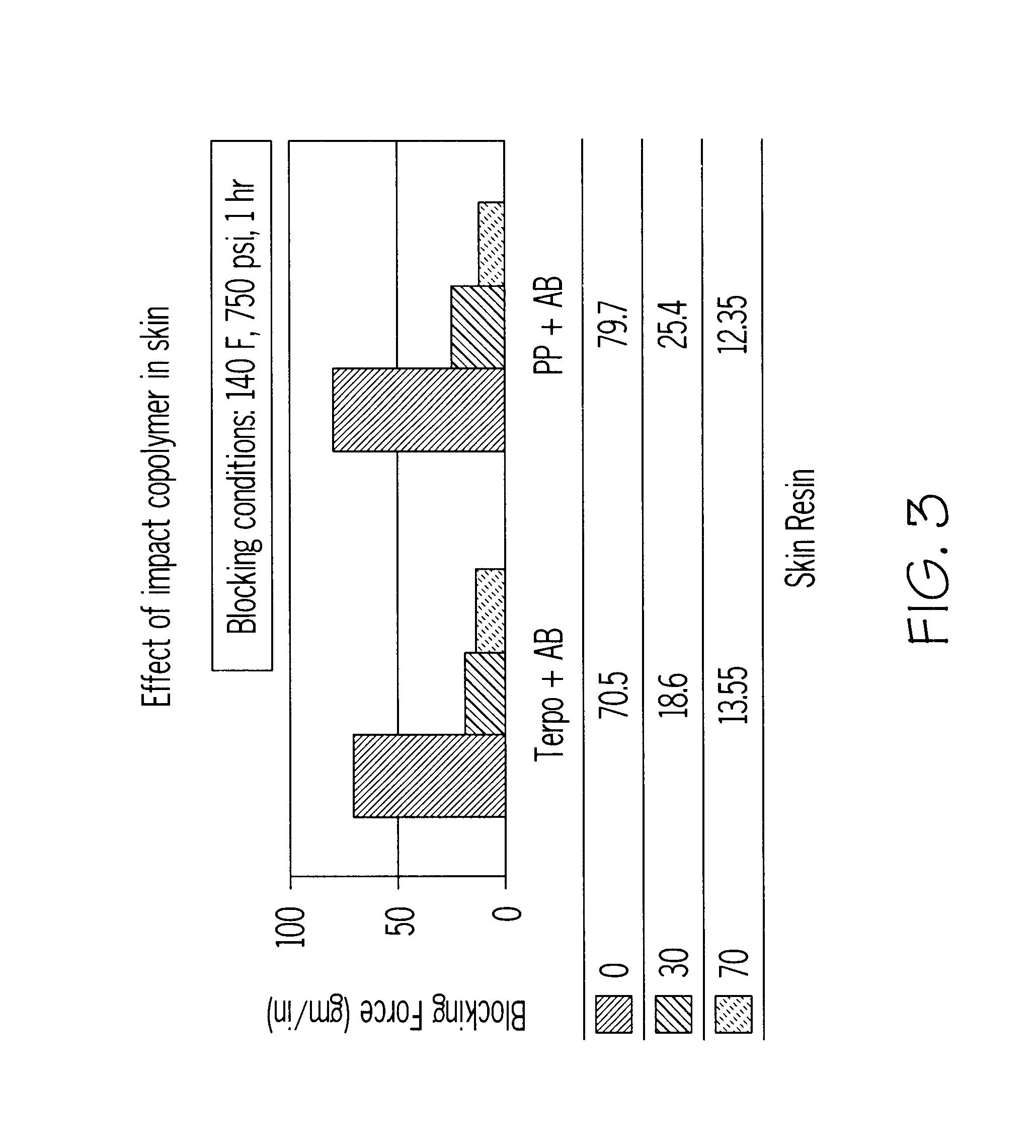Films with improved blocking resistance and surface properties
- Summary
- Abstract
- Description
- Claims
- Application Information
AI Technical Summary
Problems solved by technology
Method used
Image
Examples
example 2
ii. Cavitated Structures
The structure of the film used in the example from which the data is generated is shown below. The thickness of the layer is expressed in gauge (ga) which is 0.00001 inch.
As shown in Table III, different resin types and different additive packages were used to vary the non-print surface. The structure with the impact copolymer skin consistently had the lowest blocking force.
The basic film structure from which the data of Table IV is generated is shown below:
Table IV shows the effect the use of impact copolymer as a skin layer has on blocking forces and COF in multilayer films. In each instance, substituting an impact copolymer skin layer for a homopolymer PP or a EPB terpolymer or a HDPE skin layer lowered the blocking force. The effect was greater at the lower pressure.
FIGS. 1 and 2 show the effect that the using impact copolymer as a skin layer in contrast with using homopolymer polypropylene or terpolymer as a skin layer. The blocking conditions are set at...
example 3
The structure of the film from which the data in FIG. 5 was generated is shown below:
In this example, the impact copolymer is blended into the treated skin resin. The treated surface was tested against itself. The COF of the samples with impact copolymer layers was lowered without the use of antiblock. The COF at a 50% loading was not always better than the 20% loading, so there may be a point at which the effectiveness diminishes or reverses. FIG. 5 is a graph showing this effect.
example 4
Impact Copolymer Used as a Tie Layer
The structure of the film used to generate the data in Table V is shown below:
In these samples, the impact copolymer was used as tie layers. Because the samples were made one side treated only, the treated surface was tested against itself. Both blocking conditions showed reduced blocking force when the tie layers were impact copolymer. The COF of the samples with impact copolymer layers was significantly reduced without the use of antiblock. This effect was particularly dramatic when the skin layer had no antiblock formulated into it. See Table V.
The data in Table VI is generated using the film structure shown below:
In these samples, the impact copolymer is used as the tie layer. One tie layer includes titanium dioxide. Because the sample was made with only one side treated, the treated surface was tested against itself. When the tie layer was impact copolymer, reduced blocking forces were seen under conditions of 125.degree. F. / 125 psi. The COF ...
PUM
| Property | Measurement | Unit |
|---|---|---|
| Fraction | aaaaa | aaaaa |
| Fraction | aaaaa | aaaaa |
| Fraction | aaaaa | aaaaa |
Abstract
Description
Claims
Application Information
 Login to View More
Login to View More - R&D
- Intellectual Property
- Life Sciences
- Materials
- Tech Scout
- Unparalleled Data Quality
- Higher Quality Content
- 60% Fewer Hallucinations
Browse by: Latest US Patents, China's latest patents, Technical Efficacy Thesaurus, Application Domain, Technology Topic, Popular Technical Reports.
© 2025 PatSnap. All rights reserved.Legal|Privacy policy|Modern Slavery Act Transparency Statement|Sitemap|About US| Contact US: help@patsnap.com



